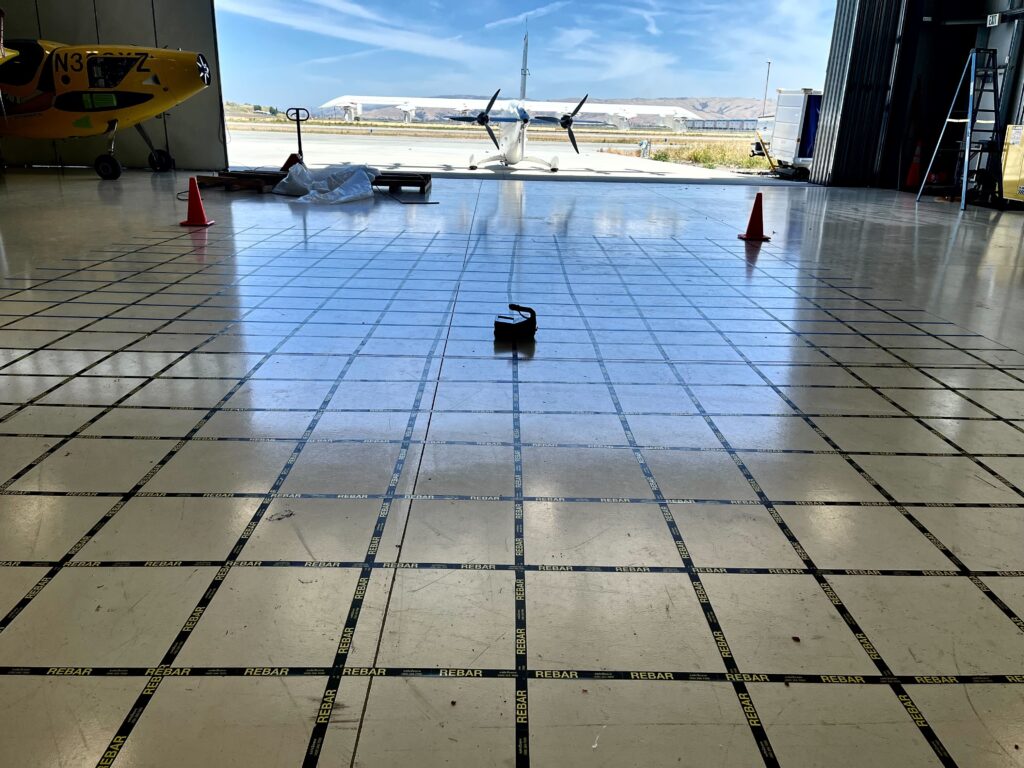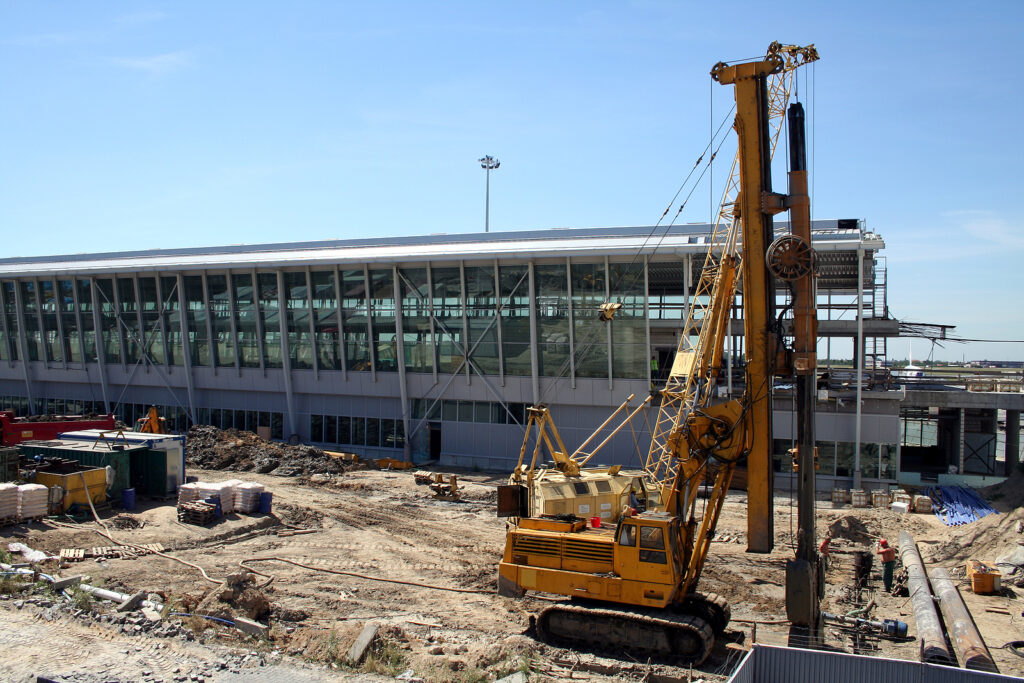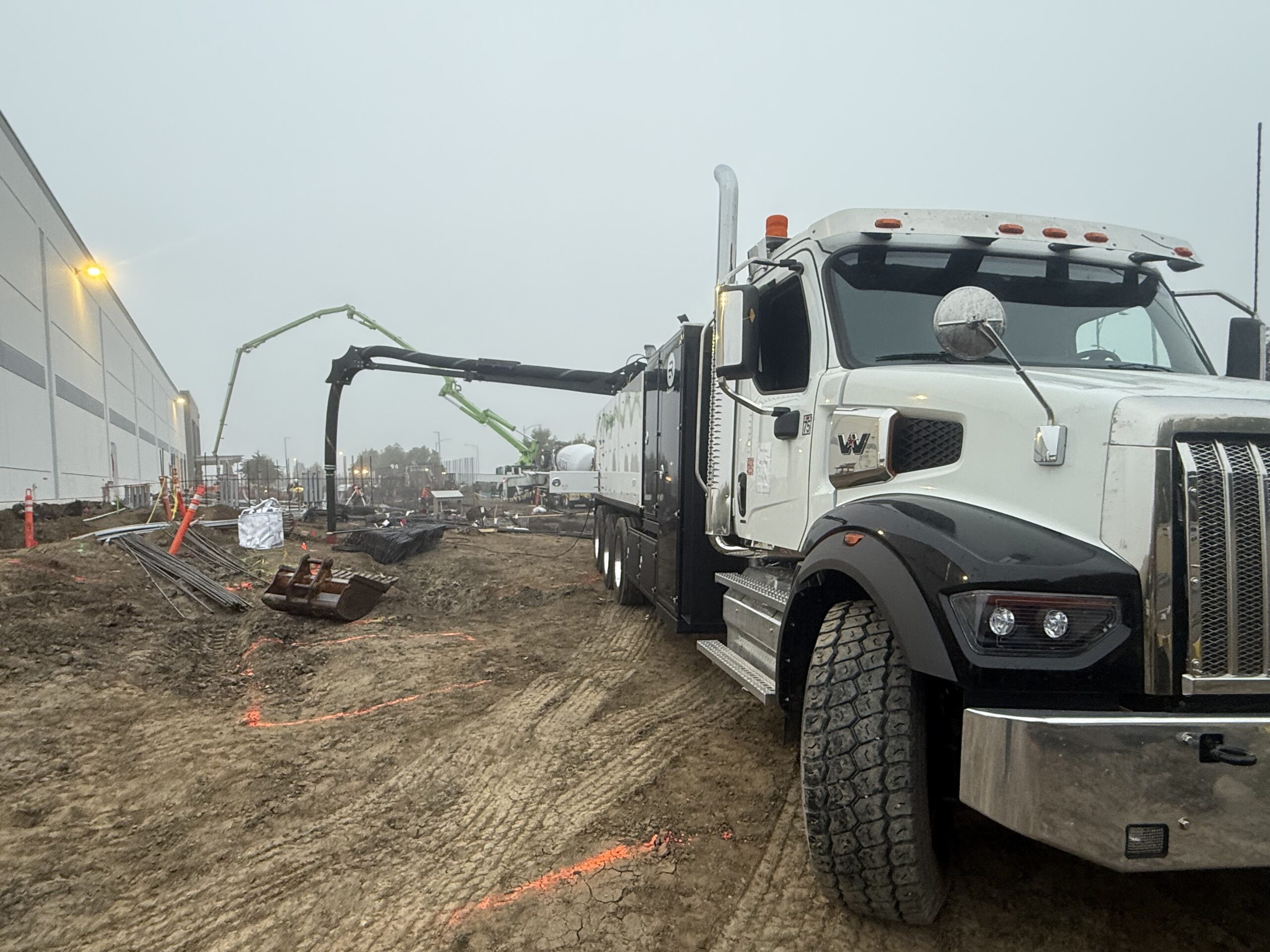Airports / Transportation / Other
Welcome to Safe2core, your trusted partner for comprehensive concrete and utility services, specializing in airport infrastructure. Our expertise in concrete scanning, ground penetrating radar (GPR), concrete cutting, and private utility locating ensures that every project is executed with precision and safety. At Safe2core, we understand the critical nature of airport operations and the importance of maintaining uninterrupted service. Our advanced technology and experienced team provide reliable solutions to detect and address subsurface issues, enhancing the safety and efficiency of airport construction and maintenance projects. Trust Safe2core to deliver unparalleled accuracy and efficiency, ensuring your airport remains safe and operational.

- LAX International Airport – Los Angeles, CA
- SFO International Airport – San Francisco, CA
- San Jose Mineta International Airport – San Jose, CA
- Oakland International Airport – Oakland, CA
- San Carlos Airport – San Carlos, CA
- Baltimore / Washington International Airport –Baltimore, MD
- Pacific Gas & Electric – Northern, CA
- BART Stations – Northern CA
- VTA – Mountain View, CA
- Chevron – Northern CA
- Shell – Northern CA
- Gas-N-Shop – San Jose, CA
- 76 Gas Station – Northern CA
- Cirque Du Soleil – San Jose, CA
- And more….
The Role of GPR in Today's Airport Terminal Development
Ground Penetrating Radar (GFP) services are reshaping airport terminal development by streamlining planning and construction. This technology facilitates a thorough understanding of what lies beneath the surface, thus optimising the design phase for future terminals. Specialists utilizing GPR can detect and map underground utilities, geological features, and potential obstructions, hence benefiting the intricate process of terminal development.
Terminals remain operational hubs with a need for continuous assessment and upgrading. GPR services ensure that these activities do not compromise safety. By accurately identifying the location of subsurface features, GPR reduces the risk of damaging existing structures during expansions and renovations. Moreover, this radar technology allows for efficient planning and execution of maintenance work, directly impacting an airport’s capability to remain functional and safe without significant service disruptions.
- Enhanced planning precision leads to optimized construction workflows.
- Comprehensive assessments mitigate risks associated with terminal modifications.
- GPR technology supports the proactive identification of maintenance needs.
Revolutionizing Runway Pavement Inspection with Radar Technology
Ground Penetrating Radar services provide a comprehensive approach to evaluating the integrity of airport runways. With precision and efficiency, these services detect potential issues well before they pose threats to safety.
- Radar technology offers a swift assessment of runway condition.
- Advanced imaging reveals structural weaknesses such as cracks or erosion beneath the surface.
- Accurate evaluation of pavement layers ensures detection of moisture intrusion.
- Continuous monitoring allows for proactive maintenance schedules.
Utilizing radar technology, airport personnel have the ability to identify runway problems promptly. Subsurface anomalies, detrimental to runway integrity, can thus be addressed, supporting an uninterrupted operation of flight activities.
Ground Penetrating Radar Services For Airports
Ground Penetrating Radar (GPR) technology stands as a cornerstone in the sub-surface mapping sector, offering a non-invasive technique to visualize what lies beneath the ground. Construction companies and contractors leverage GPR for its unparalleled ability to detect and map underground structures, utilities, and anomalies. Its precision and reliability reduce the risk of costly project delays or damages during excavation and construction processes. For airport infrastructures, with their complex underpinnings and the sheer scale of operations, GPR services are not merely add-ons but integral components that streamline construction phases, ensure safety, and adhere to regulatory compliance. Engaging GPR in airport projects translates into accelerated timetables, minimized interference with daily operations, and the solid groundwork necessary for expanding tomorrow’s air transport hubs.
Taxiway Maintenance: GPR Assessments Keeping You on Schedule
Airport taxiways bear the weight of countless takeoffs and landings, making their structural integrity critical to a facility’s operation. Ground Penishing Radar (GPR) assessments play a pivotal role in maintaining this infrastructure, offering real-time data acquisition for predictive maintenance. Through precise imaging, potential issues such as subsurface weaknesses and drainage problems are identified before they escalate.
Opting for GPR services translates into a strategic approach for minimizing operational disruptions. Accurate taxiway assessment using this technology ensures that maintenance can be scheduled and conducted without significant impact on airport operations. By accurately mapping the subsurface condition, GPR assessments inform targeted maintenance efforts, thereby avoiding the economic consequences often associated with broad, unscheduled repairs.
- Real-Time Data: GPR provides instantaneous feedback on the taxiway’s condition, allowing for a quick response.
- Operational Efficiency: By revealing precisely where attention is needed, GPR reduces the need for wide-scale disruptions to flight schedules.
- Safety Compliance: The use of GPR ensures that taxiways are maintained to comply with safety standards and regulations.
Operators may consider GPR an investment in operational continuity, safety, and cost-control. By keeping maintenance strictly to the identified schedule based on GPR data, airports stand to benefit from enhanced efficiency and reduced risk of unscheduled downtime. Furthermore, GPR-driven assessments are integral to a proactive taxiway maintenance strategy, ensuring that travelers and cargo reach their destinations without delay.
Safeguarding Air Travel: State-of-the-Art FOD Detection
Protection of aircraft and the safety of passengers are elevated with precise Foreign Object Debris (FOD) detection services. These services are pivotal to airport operations, as they pinpoint and remove harmful debris from runways, which can otherwise cause significant damage to aircraft during takeoff and landing. Ground Penetrating Radar (GPR) technologies advance these usages by allowing for the swift identification of potentially hazardous objects that are not visible on the surface.
Enhanced Detection Through GPR Integration
By fusing GPR data with pioneering detection techniques, airports bolster their capabilities to identify and mitigate risks imposed by FOD. This integration facilitates a comprehensive subsurface sweep, detecting items that evade conventional scanning methods. Airport personnel, equipped with this combined information, can take informed actions to maintain the integrity of runways and ensure a secure environment for flight operations.
- Aviation professionals rely on the constant vigilance GPR provides for early identification of FOD, leading to prompt removal and reduced risk of aircraft damage.
- Innovative detection methods, when complemented by GPR, result in a more thorough analysis of airport grounds, thereby reinforcing flight safety.
Airports that adopt these integrated systems not only enhance their safety protocols but also align with international regulatory requirements for FOD management, setting a benchmark in aviation safety and operational excellence.
Unveiling Subterranean Realities: GPR Environmental Assessments
Conducting thorough environmental assessments before initiating construction at an airport is not merely a procedural formality but a framework for sustainable project development. Ground Penishing Radar (GPR) services are instrumental in uncovering the unseen environmental conditions that could impact both the design and longevity of airport infrastructure. By harnessing this technology, developers access crucial data on soil properties, contamination levels, and groundwater characteristics.
In the realm of sustainability, GPR becomes an invaluable tool. Developers rely on detailed subsurface data to design airports that harmonize with their natural surroundings. This critical step ensures that the forthcoming construction minimizes ecological impact while adhering to regulatory mandates. Data gleaned from GPR surveys serve as a blueprint for sustainable construction endeavors, highlighting areas for conservation and guiding the implementation of eco-friendly materials and practices.
- Assessing the presence of natural habitats and ensuring minimal disruption.
- Evaluating the water table depth and quality to prevent contamination.
- Identifying soil contamination prior to construction for appropriate remediation.
Utilization of GPR in environmental assessments reflects a commitment to responsible construction. The resulting insights enable architects, engineers, and contractors to predict and plan for challenges, transforming potential obstacles into integrated ecological solutions.
Navigating Safety and Risk Management in Airport Construction
Guaranteeing safety and proficiently managing risk represent the backbone of airport construction projects. Ground penetrating radar (GPR) services are pivotal in this domain. By revealing unknown subsurface conditions prior to excavation or building, GPR reduces the likelihood of project setbacks and ensures a streamlined construction process.
Mitigating Risks Linked to Unknown Subsurface Conditions
GPR technology provides a reliable method for detecting subsurface anomalies such as utilities, voids, and water tables. Utilizing GPR reduces the risk of damaging existing infrastructure or encountering unforeseen obstacles. This capability not only secures the personnel but also safeguards the equipment from potential harm.
GPR’s Role in Proactive Safety and Risk Management Strategies
Deploying GPR services contributes to a comprehensive safety strategy. Airport builders using GPR are better equipped to predict and circumvent subsurface-related risks. Additionally, this technology allows for real-time data analysis, which supports quick decisions to avoid hazardous conditions, ensuring construction proceeds in accordance with safety regulations.
- Significant reduction in unexpected findings translates to fewer delays.
- Impact on scheduling can be minimized with precise data ahead of time.
- Proactive planning allows for the appropriate allocation of resources.
Adoption of GPR in the initial stages of construction equips project managers to integrate safety within the workflow design. Efficient risk management through the use of GVP services in airport construction is not just a precaution; it is a strategic move towards the exploitation of innovative mapping techniques for the airspace industry’s infrastructure.
Surveying & Compliance: Foundations for a Successful Airport With Ground Penetrating Radar Services
Ground penetrating radar (GPR) services facilitate thorough pre-construction surveys, essential for airports to meet rigorous regulatory compliance standards. Airports are complex systems where safety and accuracy must prevail; thus, GPR provides a substantial means to ensure projects align with aviation authority regulations. Through the employment of GPR, project managers and construction teams gain a deeper understanding of the subsurface challenges, which directly feeds into the compliance and surveying process.
Utilizing GPR, professionals can uncover and address potential issues before they escalate into costly problems, ensuring adherence to strict aviation industry standards. This technology aids in detecting variations in soil and rock properties, underground utilities, and obstructions that could compromise the structural integrity of airport projects. As a non-destructive technique, GPR allows for the detailed analysis needed for compliance without delaying the project timeline.
- GPR effectively safeguards projects against undetected subsurface issues that could affect stability or require future corrective measures.
- By providing comprehensive data on what lies beneath the surface, GPR supports the creation of more accurate and reliable construction plans.
- Professionals depend on this technology to navigate the complexities of airport construction with precision, ultimately contributing to the foundation of successful and compliant airport infrastructure development.
Through GPR services, adherence to aviation regulations is not only demonstrable but also becomes a streamlined process. Teams can easily locate, map, and document findings in a manner that supports regulatory requirements. Expert analysis of GPR data can advise engineers and architects during the initial stages of design to make informed decisions, thereby avoiding obstacles during construction.

Secure Cutting-Edge Airport Infrastructure with Our GPR Expertise
Ensuring the utmost precision and safety in airport construction demands specialized technologies. Our ground penetrating radar services present unparalleled advantages for your projects. With our team, expect accelerated timetable accuracy, heightened safety measures, and substantial cost-saving strategies.
- Time Efficiency: Rapid data collection translates into swifter project completion.
- Safety: The detection of subsurface anomalies reduces the risk of structural failures.
- Economic Benefits: By identifying issues early, avoid costly repairs and extended downtime.
- Comprehensive Reporting: Detailed imagery and analysis support informed decision-making.
- Custom Solutions: Adapted services meet the unique requirements of each airport infrastructure project.
For construction companies and contractors envisioning forward-thinking airport development, our ground penetrating radar services are your strategic advantage. Seamless integration with your project timeline and goals is our commitment. Engage our expertise today for optimum airport infrastructure outcomes.
Ready to Enhance Your Airport Project?
Contact us now and propel your construction project with the safety, accuracy, and efficiency that our ground penetrating radar services deliver. Let’s elevate airport construction standards together.
Engage Ground Penetrating Radar Experts for Your Airport Project
For inquiries and to commence a collaborative journey with precise ground penetrating radar services tailored for your airport construction or maintenance needs, the first step is contact. We invite you to initiate a dialogue, ensuring that your terminal projects, runway maintenance, or environmental assessments are grounded on solid data and advanced radar technology.
Connect with us for a comprehensive discussion about how our services can integrate into your airport project. A demonstration of our technology’s capabilities specific to your requirements is an avenue to understanding the transformative impact of Ground Penishing Radar.
Schedule Your Detailed GPR Service Consultation
Reach out to discover how our expert team can facilitate a thorough subsurface analysis for your terminal construction, taxiway maintenance or runway pavement inspection. We look forward to providing a solution that encompasses utility detection, sinkhole identification and concrete evaluation, ensuring compliance and enhancing the safety and longevity of your airport infrastructure.
- Anticipate and address potential subsurface challenges before they evolve into costly issues.
- Benefit from real-time data insights and non-destructive testing methods.
- Leverage tailored GPR solutions that respect time sensitivities and project schedules.
Our radar services represent a cornerstone for risk management, safety compliance, and informed decision-making in airport construction and maintenance. Obtain a service blueprint that incorporates GPS, GIS, and GPR data synergy that is fundamental for your project’s success.
Next Step
Email us, call our dedicated team, or fill out our online contact form to explore the extensive capabilities of our radar services. We are located strategically to serve projects nationwide and are equipped to respond to your inquiries promptly. Addressing your airport’s ground and construction challenges starts here.






